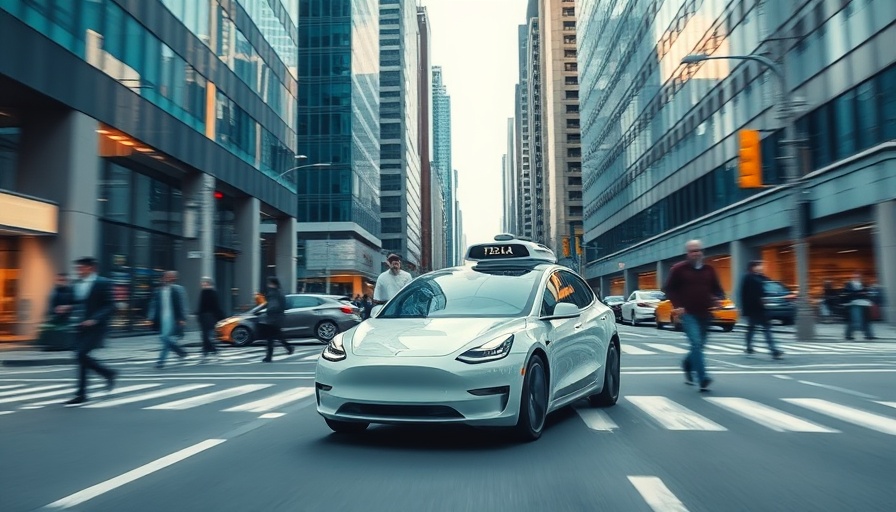
The Rise of Tesla Robotaxis: Safety in the Spotlight
As Tesla continues to expand its autonomous vehicle fleet, the growing use of robotaxis has stirred a complex conversation concerning safety and traffic regulations. Riders of these self-driving taxis are not merely passive passengers; they are now documenting a mix of experiences that reveal traffic violations and safety concerns. Various incidents have surfaced indicating that while the technology promises convenience, it inevitably invites scrutiny about its safety measures.
Insights from the Road: Passenger Experiences
In recent months, several passengers reported immediate violations such as running red lights or failing to yield at crosswalks. These incidents underline the fundamental challenge: how does an autonomous vehicle interpret real-time road conditions? For many passengers, the experience of riding in a robotaxi feels a bit disconcerting, especially when witnessing behaviors that would typically incite alarm if a human were behind the wheel. This raises crucial questions about liability—who is accountable when a self-driving vehicle commits a traffic infraction?
Historical Context: The Evolution of Autonomous Vehicles
Autonomous vehicles have been evolving for decades, originally conceptualized in the 1930s. Yet it is only in the last decade that technology has advanced sufficiently to allow for practical implementation. Companies like Tesla have pioneered the way, but they have also faced criticism concerning their approach to safety and public readiness for self-driving cars.
The Broader Implication of Self-Driving Technology
Robotaxis represent more than just technological advancement; they signify a shift in how society views transportation. As urban mobility evolves, the repercussions of autonomous vehicle technology could either enhance or threaten public safety. City planners and policymakers must now adjust traffic laws and regulations, aligning them with the capabilities and limitations of self-driving technology.
Public Perception: Trusting Technology
Building trust in robotic technology is pivotal for its acceptance. Surveys indicate varying degrees of concern among potential riders about safety when selecting autonomous services. While some embrace the innovation, others remain skeptical of the technology's ability to manage unpredictable road conditions. This public sentiment is critical, as it could dictate the pace at which robotaxi services expand.
Actionable Solutions for Regulation and Improvement
Addressing challenges with Tesla’s robotaxis will require collaboration between tech companies, regulators, and the public. Implementing transparent reporting mechanisms for accidents and violations can offer invaluable data for improving software algorithms. Additionally, regular audits of safety protocols can help enhance reliability and foster public confidence.
Future Predictions: The Transformation of Urban Mobility
Looking ahead, it is conceivable that robotaxi services will become a staple in urban areas. As the technology matures, the integration of advanced AI could potentially mitigate current issues. However, the relationship between human drivers and their robot counterparts will continuously evolve, necessitating ongoing dialogue about safety and efficiency.
As we stand on the cusp of a transportation revolution, it is crucial to consider these developments carefully. The insights and experiences shared by robotaxi passengers today will shape the trajectory of self-driving vehicle regulations tomorrow.
Stay informed about the latest updates on robotaxi services and their implications on safety regulations. Your voice matters in shaping the future of transportation.
 Add Element
Add Element  Add Row
Add Row 



Write A Comment